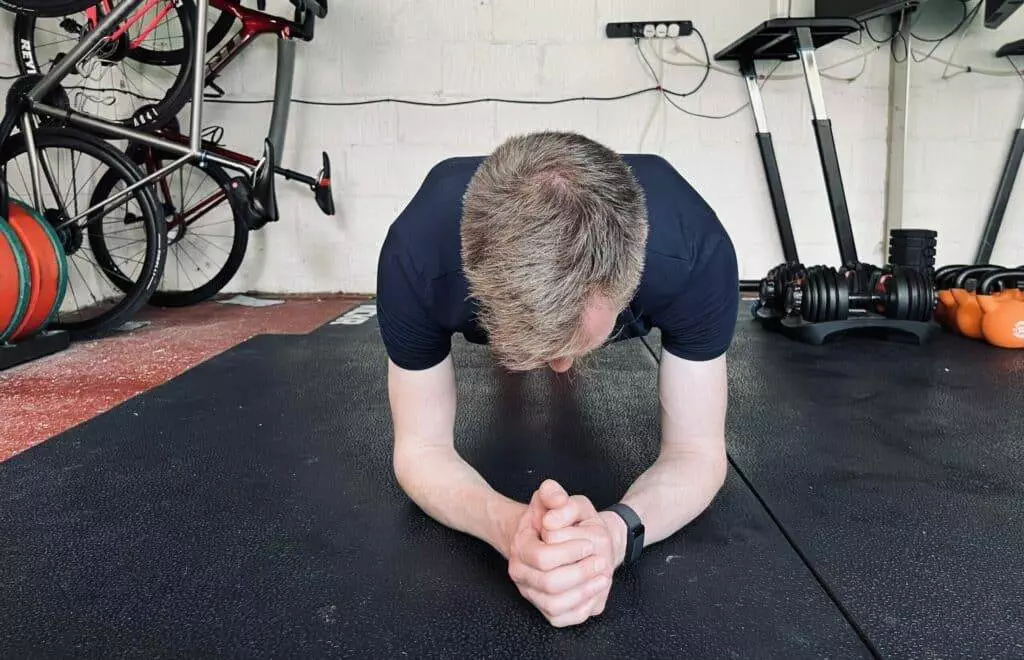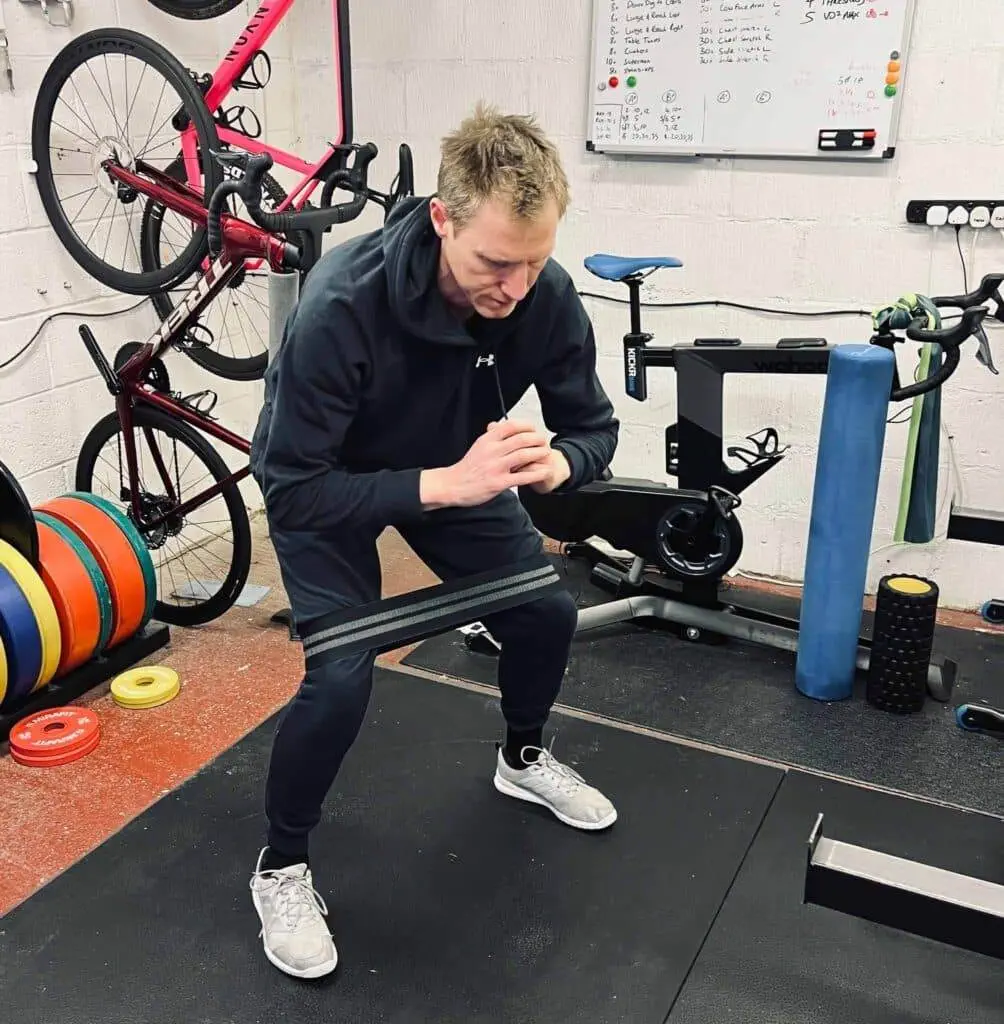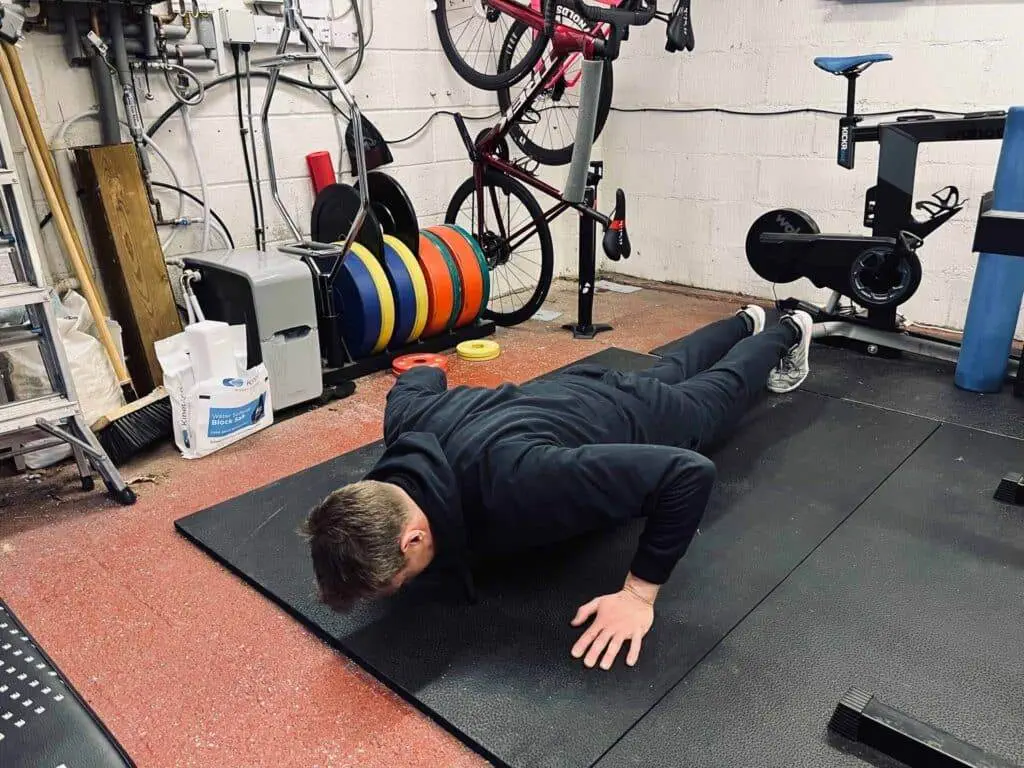Maintaining a good exercise routine is important at every age. Strength training as you get older becomes far more vital to improve your overall cycling performance.
In this article, we’re looking at the benefits of strength training for cyclists over 50, recommended workout durations, and some practical tips.
Key Takeaways
- Strength training is vital for all cyclists’ overall fitness.
- Weight training can improve bone density and balance.
- Start slow and build up the weight and reps.
- Warming up is a must for strength training.
- Monitor your progress to see what works for you – on the bike and off.

Benefits of Strength Training for Cyclists Over 50
There is a range of benefits for cyclists older than 50 hitting the weight room:
- Improved bone density: Weight training increases bone strength and growth by minimizing the risk of fractures and osteoporosis.
- Enhanced metabolism: Through strength training, muscle mass increases, which leads to a higher metabolic rate. This helps with weight management.
It’s more important for those over 50 to monitor weight gain so as to avoid putting unnecessary pressure on the heart. - Increased muscle strength: The most obvious benefit: strength training can improve the muscle strength needed for powering a bike.
- Better joint stability: It’s not uncommon for joints to become creaky and more prone to injury as they age. Through strength training, your joints remain limber and can take on more training stress.
It’s not only about keeping the joints healthy but also the muscles surrounding them. Building strength and correcting imbalances keep things loose and flexible. - Improved balance: It’s no secret that as one gets older, your balance is affected. One of the most effective ways to improve this is through training the body with strength and coordination exercises.
This also helps for cycling, where balance is a key component to success. - Increased endurance: The facts are simple: you need more muscle to go harder and further on the bike. By increasing muscle mass through weight training, your body can take on more.
So, you can look forward to steeper climbs, longer routes, and more intense cycling programs.

Disclaimer
I am not a qualified trainer. The exercises listed are based on my personal experience. If you’re unsure about any exercise, please consult a certified professional for guidance on proper technique. Incorrect form, especially with weights, can cause serious injury.
Tips for Effective Strength Training for Cyclists Over 50
Before you get going with your strength training plan, here are some helpful tips to ensure you’re getting the best out of your workouts:
- Get the thumbs up from your doctor: It’s important to get the all-clear from your GP before starting any new workout routine. This is particularly important if you’re over 50 or aren’t living an active lifestyle already.
- Warmup: We don’t recommend going into the weight room with guns blazing. You need to warm up your body to avoid injury.
You should warm up the muscles with at least ten minutes of light cardio, followed by 15 minutes of dynamic stretches to get the blood flowing. - Start slow: Consistency is key, which means starting with regular lighter resistance training. This helps your body get used to the movements, before gradually shifting from light weights to something heavier.
Don’t start with weights you can barely lift! This puts massive pressure on the muscles and joints, and your body takes longer to recover. - Give your body time to recover: Getting into a new routine is exciting, but you must listen to your body. If weight lifting means you’re spending two days on the couch to recover you need to slow down and decrease the weight.
You should have at least one or two days rest in between your workouts. - Focus on your form: Having the right form is vital for safe and effective strength training and interval workouts. It might seem small, but incorrect form could cause more problems in the long run – or ride.
For example: lunging too far forward can put excess stress on the lower back. - Avoid jerking movements: Strength training is about building muscle, so none of these exercises should be sharp and jerky. If the exercise requires movement between positions, it should be fluid and controlled.
- Look into compound exercises: These exercises engage multiple muscle groups at the same time. This often mimics the muscles activated during cycling. Examples include lunges, squats, and kettlebell swings.
- Consider getting help at the beginning: When you first get going you might want to consider getting a personal trainer at a fitness center. They will teach you how the strength training exercises should feel and how many reps might work for you.
You don’t need to see them every week, but maybe once every three or four months. - Monitor your progress: The only way to know if something is working for you is to monitor the results. Take note of how many reps you’re doing and which exercises you think are making a positive impact on your cycling.
Aging muscle fibers can cause you to lose fitness, so monitoring progress is important for aging cyclists.
It’s important to remember that everyone is different. So, what works for someone else might not be the winning recipe for you.
Consider making personal cycling goals that are achievable; losing weight, increasing muscle volume, or improving your general fitness, for example.

Frequency and Duration of Strength Training for Cyclists over 50
The duration and frequency of strength training depends on a variety of factors, including:
- The cyclist’s fitness level
- Age
- Goals
- Exercise type
Regardless of where you start, you need to build up the weights and the reps slowly. You should also focus on lower and upper-body exercises to get a full-body workout.
This is our essential four-week interval training guide – it should illustrate what we mean by “building up” in strength training:
Week 1-2 (twice a week):
- Dumbbell deadlifts (five reps) two sets
- Plank (30 seconds-one minute) two sets
- Squats (ten reps) two sets
- Leg curl (ten reps) two sets
- Lunge with bicep curl (four reps) two sets

Week 2-4 (two times a week):
- Dumbbell deadlifts (six reps) two sets
- Plank (30 seconds-one minute) four sets
- Squats (eight reps) three sets
- Leg curl (twelve reps) two sets
- Lunge with bicep curl (six reps) two sets

During riding season, should aim to do strength training twice a week for between 20-30 minutes.
You also need to consider the types of exercises you’re doing. Here are the basics that we should all incorporate to improve our performance on the bike:
- Dips
- Bench presses
- Pull-ups
- Pull-downs
- Squats
- Push-ups
- Back extensions
- Crunches
- Lunges
- Leg presses
It’s good to have a variety. Look for machine and body weight exercises for core strength that include lower and upper body training.

Recommended Resources for Cyclists Over 50
Riding at any age is a little intimidating when you first get going – you’re not alone. It’s also not uncommon for over-50s to begin cycling to improve their health and aerobic capacity after surgery.
If you’re looking for cycle exercises after a knee replacement, it’s important to start slow – just like strength training.
FAQs
How often should cyclists over 50 strength train?
This depends on a variety of factors. Initially, aim to train once or twice a week for at least 20 minutes. Keeping this up for the first few weeks will set you on the path towards peak fitness.
What is the best strength training exercise for cyclists over 50?
In our book, you can’t go wrong with a kettlebell goblet squat. It not only works the correct muscles in the lower body for leg strength but works the arms and core too.
